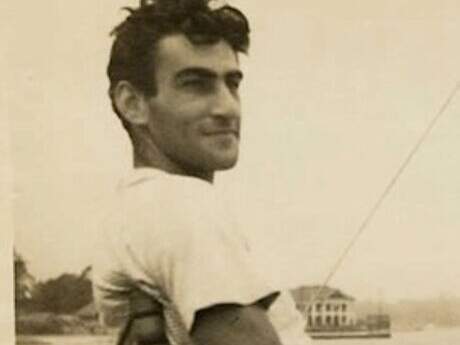Old School
On John Keats’s “This living hand”

I was just starting out when I stumbled upon John Keats's last serious gesture in poetry, the final fragment, a terminal point. I felt the blood in his hand, the trauma of what could never be finished, the lure of the partially whole, and it has reminded me ever since that poetry is a bloody art. It's a form of play, true, but the stakes are mortal. Everything is on the line.
It was sometime in December, 1819, and Keats's health was perilous. The wastage of his body was becoming apparent. Leigh Hunt remembered that his friend often looked at his hand, "which was faded, and swollen in the veins, and say it was the hand of a man of fifty." Keats had received his death warrant from tuberculosis, and the great poems were behind him—the sonnets, the odes, including "To Autumn," which may be the most perfect poem in English. He was working on a comic poem to be called "The Cap and Bells; or, The Jealousies." He never finished the fairy tale, the weakest of his mature poems, the Spenserian stanzas he churned out with remarkable fluency to earn some money for his publisher, but at some point while he was writing it he broke off and jotted down some lines in a blank space on the manuscript. He turned from stanza 51—"Cupid I / Do thee defy"—and wrote something dark and serious, preternaturally alive, this untitled eight-line fragment:
This living hand, now warm and capable
Of earnest grasping, would, if it were cold
And in the icy silence of the tomb,
So haunt thy days and chill thy dreaming nights
That thou would wish thine own heart dry of blood
So in my veins red life might stream again,
And thou be conscience-calmed—see here it is—
I hold it towards you.
It was once thought that these lines were addressed to Fanny Brawne, but most scholars now agree that Keats meant them for use in a later poem or play. They weren't published until 1898 when they appeared in H. B. Forman's one-volume edition of Keats's work. Once encountered, though, this fragment of consciousness can't be ignored or forgotten. In "The Fall of Hyperion" Keats had already foreseen the moment "When this warm scribe my hand is in the grave."
The poet dreams through his hand, a sign of dexterity, the capable movement of a capable imagination. The person who wrote "This living hand" knew, at the very moment of writing, the "warm" hand with which he could still touch you would soon be "cold" and unable to grasp anyone or anything. He is distraught, terrified really, and reaches out for contact. He is enraged and displays his hand to prove to you he exists—"see here it is." He converts the listener, the reader, from a formal "thou" to a more intimate "you." The sentence moves from the conditional future to the present tense. He will someday be collaring you from beyond the grave, but he can only physically enact that gesture while he is still alive.
Keats understood that he would probably be dead by the time you encounter this fragment. He suggests that he would like to cheat death by haunting the reader's days and nights, troubling your dreams, so devastating you that you would be willing to sacrifice yourself and calm your conscience by trading places with him. This impossible blackmail—"So in my veins red life might stream again"—is a last desperate gesture. He once lifted up a living hand. It reaches out to us still, but now through words. Here it is—this made work, this living thing. Look, he is holding out his hand. He is challenging you, whoever you are, to grasp it.


